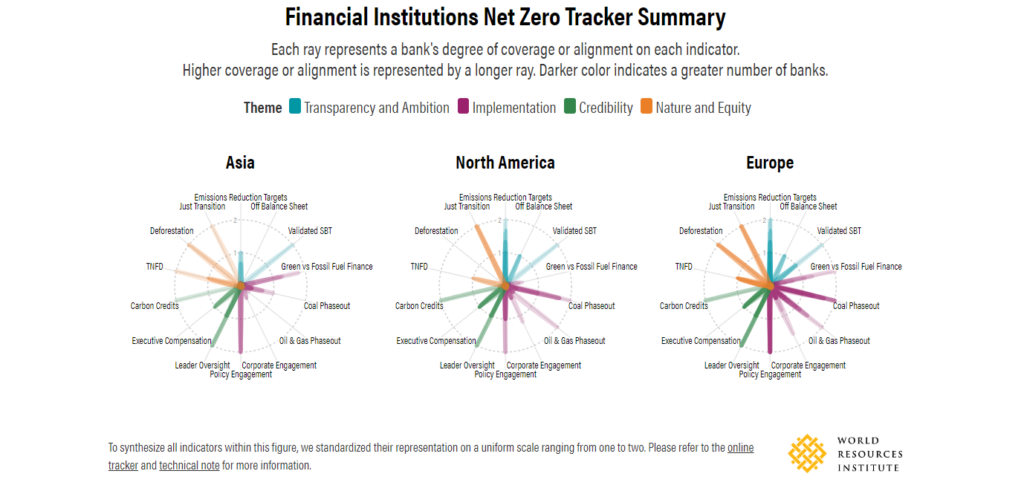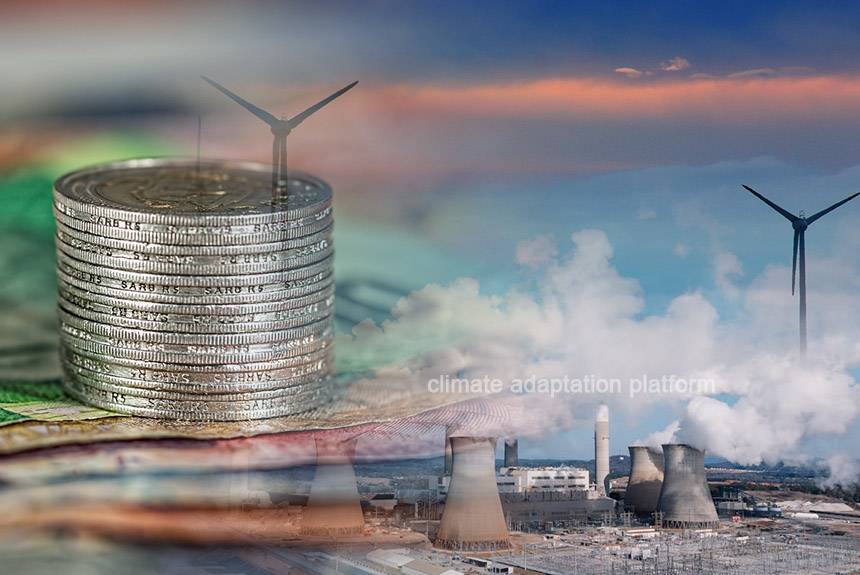Banks are essential in helping countries reach zero goals, transition to a green and renewable economy, and reduce GHG emissions.
Claudia Buch, Chair of the Supervisory Board of the European Central Bank, highlighted the role banks play in helping achieve climate neutrality in her speech at the Week of the Environment. She said, “Because banks are an important bridge to the future.
Their loans reflect the economic structures of the past – for example, loans made to companies with high carbon dioxide emissions. Banks can at the same time help to shape the future by making new loans, for example, to producers of renewable energy”.
Deloitte, a British multinational professional services network based in London, echoes this sentiment in their article “Banking on climate neutrality: The global banking industry’s role in transitioning to a low-carbon economy,” saying that banks are “financial intermediaries who can support the transition to climate neutrality banks” and are “increasingly evaluating business opportunities, risks, and ways to support and accompany clients on the journey to climate neutrality.”
Banking on climate (2024) continues:
“Along the way, they are reviewing their own operating and business models to ensure that climate-related matters are adequately addressed in their own operations, as well as in their financing activities and engagement with clients. Banks must pay close attention to how capital is redirected and to the risk of potentially stranded assets that have or will be suffering from unanticipated or premature write-downs, devaluation or conversion to liabilities. Considerations on stranded assets will play a significant role in the transition to climate neutrality of lending and investment portfolios.”
We featured ADB’s 2024 Report in our previous post, titled “Green Investment Banks: Unleashing the Potential of National Development Banks to Finance a Green and Just Transition.” This document highlights how central and green investment banks can lead a transition to a low-carbon future, advocating for strengthening their role to finance more climate projects to help our economies transition to net-zero emissions.
According to the IEA 2023 update, the world needs to invest US$ 1.8 trillion in clean energy, and this needs to rise to US$4.5 trillion by the early 2030s for the energy sector to achieve net zero CO2 emissions by 2050 or be in line with the 2025 Net Zero Emissions Scenario pathway set by the IEA in 2021. However, this massive figure does not include transforming the food, transportation, industry, and shipping industries to quickly reduce GHG remission this decade. Banks will play a role in financing this transition.
Recognising their essential role, banks have increasingly committed to their clients by aligning their finance flows with reaching net-zero emissions by 2050.
According to the WMO article “Banks Have Committed to Net Zero but Aren’t on Track to Reach It,” banks do wield the power of financing.
Lea and Carter (2024) explain, “By prioritising lending toward climate solutions and phasing out harmful financing, such as for fossil fuel expansion and businesses driving deforestation, banks can play a critical role in reducing emissions in just about every sector of the economy. Banks can also help companies access capital markets and raise debt and equity from investors who are increasingly focused on sustainability, influence clients across entire value chains to align with net zero, and advise and push their clients on setting climate transition plans that will shift their business models and reduce carbon emissions.”
The article analyses the banks’ net zero commitments and whether they are on track. It identifies the indicators such as their green vs fossil fuel finance policies and leveraging their financial strength to influence the phase-out of coal, gas, and oil, reducing deforestation, and protecting communities that depend on carbon-intensive industries or are disproportionately affected by climate change, known as a “just transition” and shows where they are progressing and lagging behind.
Their analysis reveals that the banks’ commitment remains on paper, which must be avoided. A closer look at several of them shows that they are not on track to meet their goals.
The WMO’s new Net Zero Tracker looks at 17 indicators to comprehensively view banks’ current climate commitments. Their analysis shows that while banks have taken various approaches to net zero, many leave out key elements that should be part of an effective strategy.

The WMO article presents three takeaways:
1) Despite Progress, Many Banks Have No or Weak Targets in High-emitting Sectors.
2) Banks’ Existing Targets Are Not Aligned with Limiting Warming to 1.5°C.
3) Banks’ Green Financing Isn’t Enough, either. IEA projects that investments in clean energy and fossil fuels must reach a 10-to-1 ratio by 2030. However, analysed banks have averaged a 1.3-to-1 ratio of green to fossil fuel finance since they began reporting their green finance numbers.
WRI’s Financial Institutions Net Zero Tracker provides an in-depth, interactive look at 25 banks’ climate commitments, highlighting which ones are leading the way and which are lagging.
Source:
Banking on climate neutrality: The global banking industry’s role in transitioning to a low-carbon economy. (2024). Deloitte. Retrieved from https://www.deloitte.com/global/en/Industries/financial-services/perspectives/towards-climate-neutrality.html
Lee, A. & Carter, A. (2024, August 14). Banks Have Committed to Net Zero but Aren’t on Track to Reach It. WMO. Retrieved from https://www.wri.org/insights/banks-off-track-for-net-zero-emissions
Working together for climate neutrality: what role do stable banks play? (2024, June 4). European Central Bank. Retrieved from https://www.bankingsupervision.europa.eu/press/speeches/date/2024/html/ssm.sp240604~16186689b5.en.html#
Net Zero Roadmap. A Global Pathway to Keep the 1.5 °C Goal in Reach. 2023 Update. IEA. Retrieved from https://iea.blob.core.windows.net/assets/9a698da4-4002-4e53-8ef3-631d8971bf84/NetZeroRoadmap_AGlobalPathwaytoKeepthe1.5CGoalinReach-2023Update.pdf



Leave a Reply